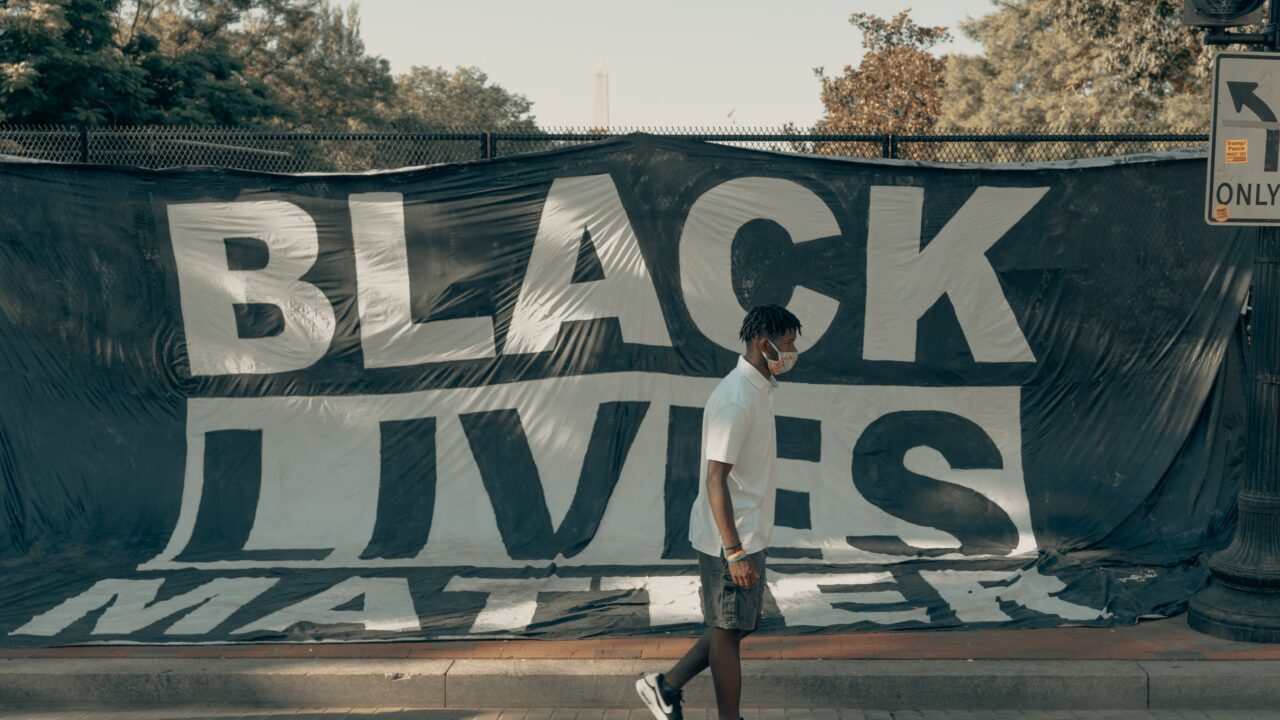After the murder of George Floyd, a global uprising against systemic racial injustice was ignited. During the initial weeks of the uprising, millions of people took to the streets to protest, but big philanthropy was relatively quiet. As the protests waged on in June and into July, many philanthropists and foundations eventually named “structural racism” as a problem and issued statements of solidarity with protesters. And under mounting pressure from staff to back up their words with money, corporate philanthropy and foundations ramped up their response by increasing investments in racial equity work. The $12 billion in commitments between June 2020 and January 2021 constituted the largest giving in the area of racial equity in philanthropy’s history.
But what does this flurry of action around racial equity in the philanthropic sector actually mean? Is it really a sign of transformative change? Foundation leaders may have issued statements in support of racial justice, but most were still uncomfortable naming the institution of policing or the system of violent racial capitalism as problems. Even if philanthropists were to name policing, for example, as a product of racial capitalism, they would still be reliant on capitalist systems to produce and maintain their wealth. As scholar Ruth Wilson Gilmore puts it, they rely upon “twice stolen wealth,”: stolen once by industries that profited from underpaid or unpaid predominantly Black and brown labor and/or exploitation of the environment and a second time through charitable tax deductions that place this wealth in philanthropic endowments that are privately managed by mostly white trustees.
Foundation leaders wanted racial justice on their own performative terms; change, but not so much as to upend the entire system. Even if we recognize that philanthropy is a creature of capitalism and thus unwilling to address policing and carceral systems, it can still do much more to support social movements for racial, economic, and social justice. Philanthropists could start by pledging not to repeat the mistakes of the past – specifically the practice by which private philanthropy uses its influence to shape the agenda and strategies of vulnerable civil rights organizations. History is rife with examples of what one of us, Megan Ming Francis, dubbed “movement capture.”
In the broad ecosystem of the 1960s freedom struggles, this pattern played out in many movements, including the California Farmworkers Movement, which sought to transform a racially stratified and abusive agricultural industry through the creation of mutual aid institutions and cooperative agriculture. Relying on monthly dues from fieldworkers, movement founders initially took a firm stance against outside funding. However, when leader Cesar Chavez began to worry that the more moderate farmworker service organizations receiving philanthropic grants would water down the organizing agenda, he began to court private foundations. Funding agreements between Chavez and foundation allies, most notably Ford and the Field Foundation, ultimately resulted in a retreat away from farmworker organizing to a focus on nonprofit service groups that provided educational programs for farmworker families. Consumed by administrative work and other movement challenges, Chavez accepted a foundation-approved translation of farmworker organizing that explicitly disallowed any pressure on the “economic sphere” — in other words, against big agriculture or for collective farmworker ownership.
This approach to social control was not invented in the 1960s. One of the most celebrated examples of liberal philanthropy is the American Fund for Public Service’s (known as The Garland Fund) support of the NAACP’s school desegregation campaign, which paved the way for the historic 1954 Brown v. Board of Education Supreme Court decision. Conventional wisdom has it that the interests of the AFPS and the NAACP converged around the issue of segregated schools in the South, leading the fund to provide the necessary seed money for the litigation effort. This funding story even has a fairytale ending: the collapse of legalized Jim Crow education laws.
Unfortunately, this well-packaged narrative hides a more complicated one: the shifting of the NAACP’s civil rights agenda between 1923 and 1930. At the time, racial violence — not education — was the priority issue for the NAACP, which believed the protection of Black lives from state and vigilante white violence was the pinnacle civil rights struggle of the 20th century. However, funds had dwindled, and the NAACP could barely keep the lights on. Enter the AFPS, a progressive foundation with a board of directors comprised of white radicals. The NAACP’s leadership attempted to redirect the money to the issue of racial violence but with little success and begrudgingly chose to move forward with the AFPS grant. The result was a shift in the larger civil rights movement away from direct action on racial violence to litigation focused on education.
And that takes us back to the present. The safety of Black lives is at long last the galvanizing civil rights issue it was meant to be decades ago. In 2016, the Movement for Black Lives (M4BL) developed a detailed policy platform with a clear call to invest/divest: “We demand investments in the education, health and safety of Black people, instead of investments in the criminalizing, caging, and harming of Black people.” And in 2020, the M4BL stated in no uncertain terms: “The Time Has Come to Defund the Police.” The demand from those most impacted is clear.
But once again, big philanthropy is acting in ways that undermine radical movements for justice. Instead of answering the call of some of the most marginalized citizens in our society, many in philanthropy have cozied up to the corporations that have made life miserable for so many. For example, they have gaslighted us with new social bond initiatives underwritten by Wells Fargo Securities and used valuable political capital to advocate for corporate accountability instead of directly supporting the Movement for Black Lives’s demand to defund the police. Even now, months after the height of the BLM protests, funders are exhibiting reluctance to fund local Black-led grassroots organizations.
Far from feeling like the crescendo of decades of funding social justice organizations, last summer’s protests have exposed a gilded philanthropy wholly out of step with the causes it purports to support and lacking in imagination about how to cede power to support Black-led movements.
Foundation leaders are of course more cognizant today of the influence they wield. Instead of directly using the power of the purse to shift the agendas of Black-led groups and activists, they have embraced a more obscured form of soft power.
Many of the leading criminal justice grant makers, such as Arnold Ventures, Koch, and Chan Zuckerberg Initiative, favor “reform” efforts. This has not resulted in capturing the agenda of specific organizations within the Movement for Black Lives, but it has had the effect of legitimizing a criminal punishment system that activists have long argued is irredeemable and beyond reform. Many of these reform initiatives, such as an Audacious Project grant centered on policing reform or the celebrated campaign to #CloseRikers (and then spend more than $8 billion to build four new jails), further enlarged the system by pouring more money into policing and prisons. In funding a new cadre of reformers, big philanthropy has consistently undermined a central tenet of the Movement for Black Lives, forcing organizers to expend time and resources in combating not just the unjust criminal punishment system but also well-funded organizations with reformist goals.
The tension between foundation leaders and abolition-centered organizations, including those engaged in the invest/divest movement towards a more fully just and caring world, points to a central problem in philanthropy: many funders want to fund “movement building” but do not actually know what that entails. Deep investments in movement building would require funders to engage deeply in the history of social movements, to shift how they evaluate success, and to adopt longer time horizons. If funders want to decrease the degree of movement capture in the present moment, they must transform internal and external grantmaking processes. In particular, foundations need to look internally to foundation processes that have undermined movements; externally, funders need to do much better at trusting the vision of organizers from communities most affected by an issue.
As big foundations continue to call for change and promise to back it up with their dollars, we need to make sure they don’t respond to the moment by supporting reformist or palliative programs. Paul Ylvisaker, a central figure in Ford Foundation’s grantmaking in the 1960s, once advised foundation staff to “search for consensus in approach and resolution. Consensus is an institutional imperative in our times, simply to minimize the friction generated by institutions moving through a crowding social and political environment.” This was poor advice for philanthropy back then – and it remains poor advice today. Instead, foundation leaders need to allocate funds to the groups working on the ground to build new community-owned forms of safety, care, and self-determination – and they need to trust that those organizations know how to get the job done.
A lengthier version of this article originally appeared in HistPhil.


